But I Digress…
Discursive Workshop is a spin-off series of blog posts from the main Discographic Workshop series. Discographic refers to discs released with Radiophonic Workshop material and the Discursive series refers to non-disc material that wasn’t released as such. It’s really a place where I can let fly with any other ephemera or just plain interesting research which I’ve come across. In a word discursive. Digressing from the main subject or context.
Mellotronic Sound Effects
Somewhere in my deep and long memories of watching and listing to the BBC’s output the notion of a ‘sound effects machine’ has been buried. What was that referring to, actually? Was it really a single machine or did presenters and writers just imagine a single machine when in fact there was a load of different equipment used for cueing in effects? In the Radiophonic Workshop tape archive there is a reference to sounds for a Mellotron. Could this be something to do with a sound effects machine?
In February 1966 Tape Recorder magazine carried an article titled “Systematic Sound: an examination of the Mellotron Sound-Effects Console BY DAVID KIRK” The piece describes a new version of the Mellotron instrument designed to play sound effects.
“The BBC Sound-Effects Library is the source of all material used on the effects console. The machine can, however, be programmed with the user’s own recordings, these being submitted to Mellotronics Ltd. on 1/4in. tape at 7 1/2 i/s, where they are dubbed on to 3/8in. tape for insertion into the console.
Tape Recorder February 1966
The sound-effects console is available on hire or can be purchased
for £2,625. The BBC was one of the first customers and has shown
great interest in its development and use. However, when one remembers that the device is not so much a piece of audio equipment as a very versatile information store, it is reasonable to expect a spate of widely differing applications to appear in the course of time.
Medical authorities, for example, have expressed interest in a version
of the sound-effects console, programmed with cardiac murmurs,
faulty heart-beats, stomach rumbles and all ancillary noises worth memorising by the trainee surgeon.
Well, I’m not sure if the medical community ever embraced that possibility (although Ferris Bueller took up the idea, albeit digitally with his Emulator keyboard some twenty years later)! However, BBC Records did get in on that act with the Symphony Of The Body album. And here I am, already digressing on this discursion.
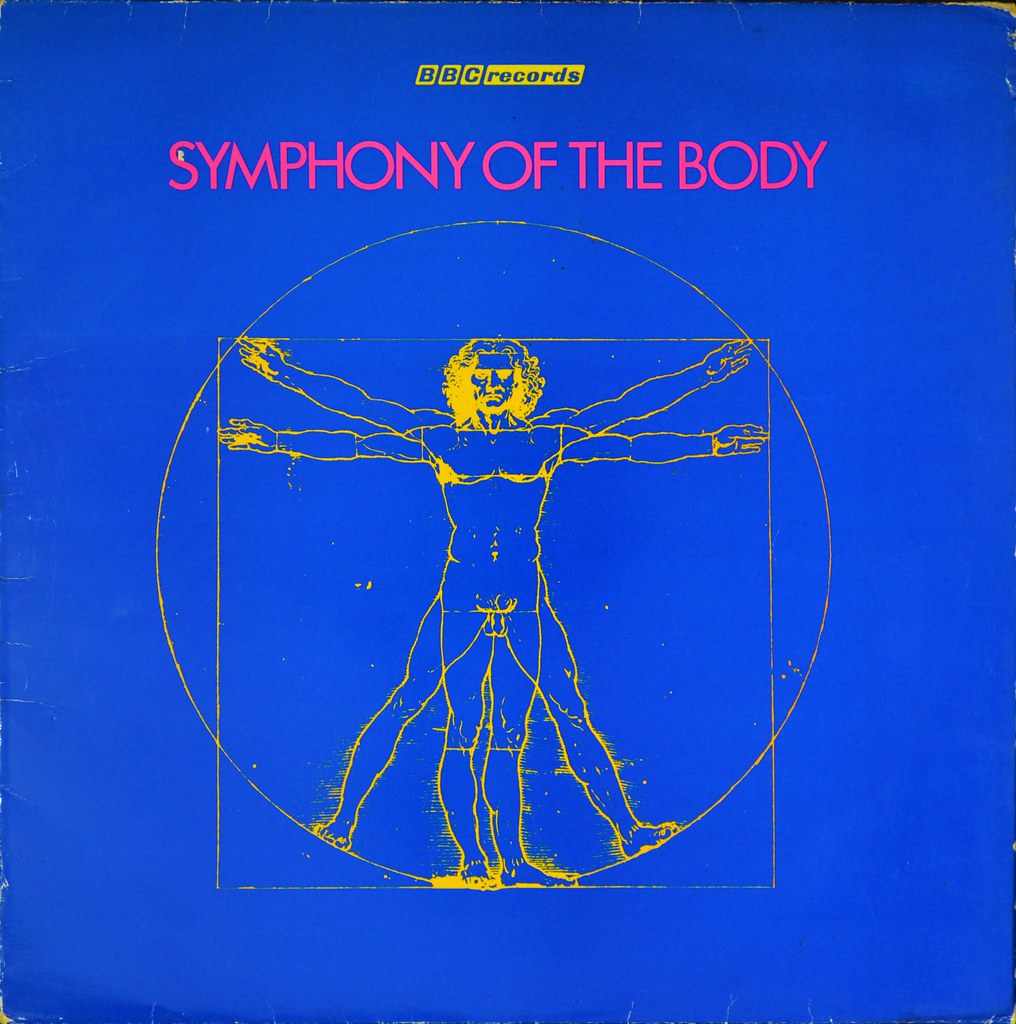
Mellifluous Electronics MKI
Let’s go back a step to what a Mellotron is. And I do mean ‘is’ because although they work differently inside you can still buy a Mellotron. The history of the keyboard instrument known as the Mellotron is long and complex. The original idea was born in the Chamberlain instrument but was rebranded and relaunched in the UK as the Mellotron thanks to some skulduggery which was not the fault of the inventor or the Mellotron company. All you need to know is that it looks like an organ but creates sound from tapes. Every key on the piano-style keyboard is a start button for a length of tape to be played. So, a C key will perhaps play a tape of a choir singing in the note of C. The recording could be of anything though. A guitar, a piano and a brass section or orchestra. Furthermore, you might have a rhythm on some of the tapes and an instrument on others. Just like the auto-accompaniment on an electronic organ, you could be the whole band!

The intention was to sell the Mellotron to keyboard players who could be a one-man band and that wasn’t a bad idea, given subsequent the explosion in home organs in the 1970s. In the 1960s this was not a huge success and is not the thing that people remember it for today. Yes, Princess Margaret and Peter Sellers had one (I mean each, they didn’t share one between them) and there was a market for the bossa-nova rhythms with string section played with the right hand. The real breakthrough though was with rock and pop bands. In particular, progressive rock bands of the seventies just had to have a Mellotron and The Beatles were quick off the mark too with Strawberry Fields’ famous flutes introduction. The original MKI was released in Britain in 1963 and the BBC were immediately on the sales team’s hit list, arranging a demonstration in June of that year.
Two MKI Mellotrons were purchased by the BBC in 1963. One was used at the Sound Effects Library for auditioning effects and the other – mind-bogglingly – for playing effects onto news reports. Presumably, this would be to add simple background sounds, such as traffic, crowd noise and other atmospheres to otherwise silent film footage. In 1964 the Sound Effects Centre broke away from the main Sound Archive library and set up at the former Gramophone Library site in the basement of Western House. Another MKI Mellotron was purchased with sound effects from library added. Although auditioning effects at the Sound Effects Centre was a nice service to have, the real prize was to have a facility to hand when doing the actual effects dubbing.
Meanwhile, engineering and finance heads were eyeing up a way to make the Radiophonic Workshop more efficient and thought the Mellotron would be just the ticket. This was to misunderstand completely the Workshop’s function skills and indeed needs. There would never be a Mellotron at their Maida Vale studios, but the story of the RWS and the Mellotron doesn’t end there.
The Sound Effects Console.
Although it was a significant time-saver for sound editors needing to find a quick ‘spot effect’ the BBC wanted a way to play-in sound effects and the MK1 ‘melly’ was too wobbly and grainy sounding (which was maybe wonderful for psychedelic artists but not suitable for the beeb). In 1965 Mellotronics came back with the improved MKII model. Later that year a special version, as stated in that Tape Recorder article (see above), was designed with the BBC in mind. The Mellotron Sound Effects Console was a kind of MKII but souped up to meet BBC’s technical standards and optimised for effects by removing some of the accoutrements. It was housed in a cheaper plywood cabinet painted black or regulation grey instead of the mahogany of the original and they also removed the reverb unit and fitted a smaller loudspeaker. Crucially it sounded far more hi-fi with a transistor amplifier amongst the improvements.
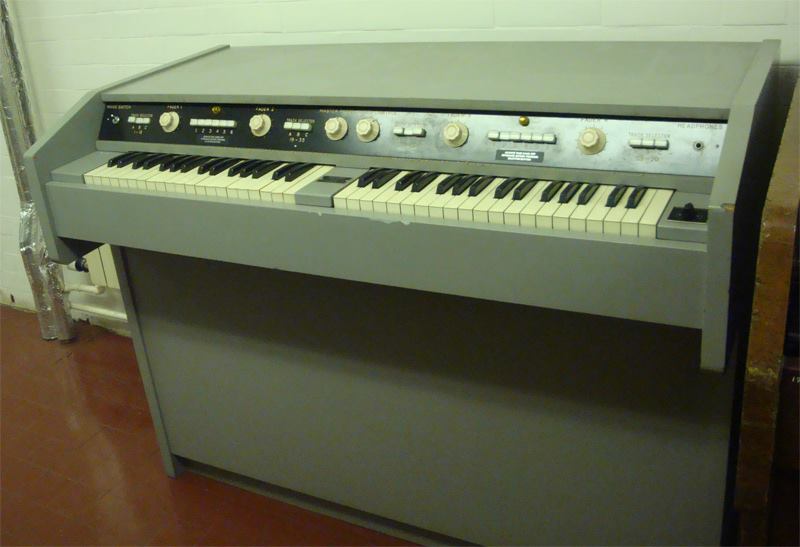
The MKII Mellotron was able to serve up 1260 different sounds with a maximum of two hours of sounds available and with the improved BBC engineering requirements solved some of the issues that dubbing sounds presented. In comparison to juggling records or piecing together their own tapes, this machine was a doddle to use.
By the mid to late sixties video editing was progressing from the early days of cutting to the non-destructive process of copying from one tape to another. The Mellotron Sound Effects Console was (according to G-Force Software – see below) destined for use on new video edit suites at the Beeb. The photo below shows such a suite, but, sadly the tellly Melly is not in frame, but you get an idea of the grey chic they were going for.
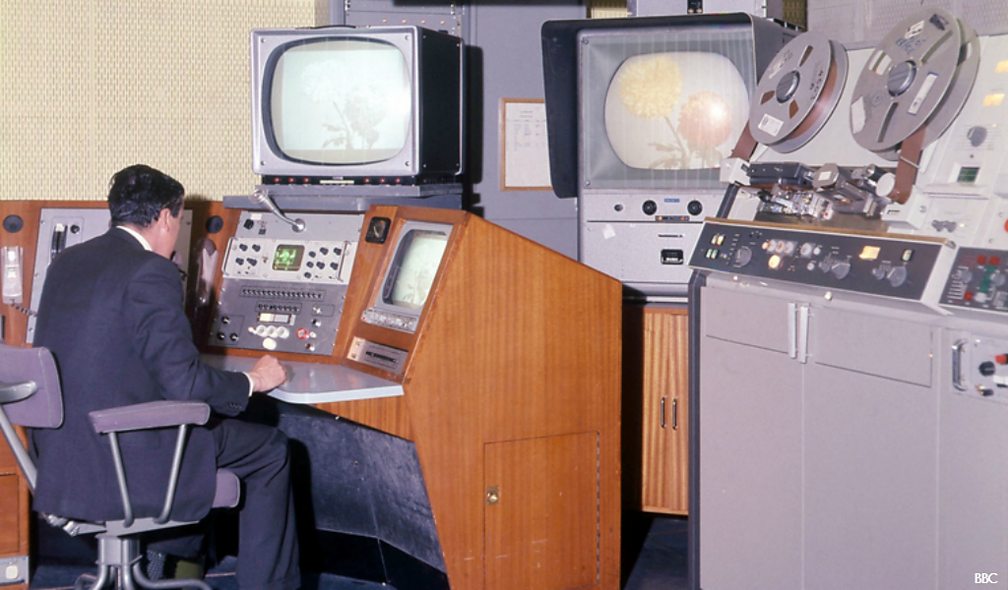
These next pictures show the catalogue of effects included in the factory Effect Console. Note how there are instructions for changing the effects by sending standard 1/4 inch tapes off for transfer to the Mellotron type of 3/8 inch tape. Perhaps if you were lucky enough to get one that was auctioned off by the BBC when they went out of use it might contain different effects to those it was sold with.



Handwritten on the cover is something hard to read but I think says:
- Film Unit(?)
- Room E-173
- East Tower
- Tel-Centre
- Theatre ‘X’
The Mellotron was still limited though. Sounds could only last for 8 seconds before the tape had to return to the start (which to be fair it did with some alacrity) and although a large number of effects were available at the press of a key, you could not have all of them available at the same moment nor in any combination you liked. You were stuck with groups and could not randomly access any effect quickly. Some switch around was required to access different groups of sounds.
It’s this Effects Console Mellotron where the Radiophonic Workshop really come into the story, but I have one or two more things Mellotronic to cover first.
The Beatles & the Mellotrons’ Rock Heritage
If you’re a keen Beatles superfan you’ll know that a MKII Sound Effects Console was reconfigured back into a musical instrument and purchased by EMI for use at Abbey Road Studios in early 1968. It’s this version of the Mellotron that was used by the band on The White Album. The instrument used on the intro to Strawberry Fields was a standard MKII hired in by the studio and used on several recordings. It was later bought by Jeff Lynn, then sold on to Chip Hawkes of The Tremeloes and is now at the Beatles Story Exhibit at Albert Dock, Liverpool. The grey, reloaded EMI machine now belongs to (who else?) Paul MaCartney and is demonstrated here by Howard Goodall. You can find clips of Macca mucking about with his Melly on YouTube too.
Despite its shortcomings, there was nothing as good as the Mellotron for playing these kinds of sounds until the digital revolution at the start of the 80s and you could, with sufficiently burly roadies, take an orchestra or choir on the road throughout the 70s using later improved Mellotron models. The fact that it sounds a little wobbly and degraded was not necessarily a disadvantage either. There’s no space here to go into all the acts who used a Mellotron but several of the bigger names even had their own tapes made, impatient as they were for the sampling revolution to begin.
The Programme Effects Generator
The above list of issues with the MKII Mellotron for use as an effects machine led to the development of the BBC’s own solution, the Programme Effects Generator, in 1967. The BBC Engineering Monograph no. 71 on the Programme Effects Generator details the challenges of dubbing sound effects in the sixties.
With the current usage of recorded sound effects it is not unusual for a hundred inserts to be made in a half hour radio or television programme and, in exceptional cases, many more may be required. There is no basic difficulty in providing a large number of recorded inserts but the conventional methods of doing so impose severe penalties in the time required for preparation and in the cost of the equipment necessary.
BBC Engineering Monograpoh 71 – The Programme Effects Generator
The BBC’s engineers collaborated with Melloltronics to create a machine specialised for the purposes of playing back sound effects. It was built by Mellotronics Ltd. so some might claim it as a Mellotron, except this was a real sampler because you could record into it any sound you needed. Instead of installed tapes, it played off tape cartridges, a bit like those used for radio jingles. You could simply plug in the sound you wanted and have four effects going at once. Alongside the growing library of Sound Effects Centre 7″ records effects editing was becoming something like efficient.
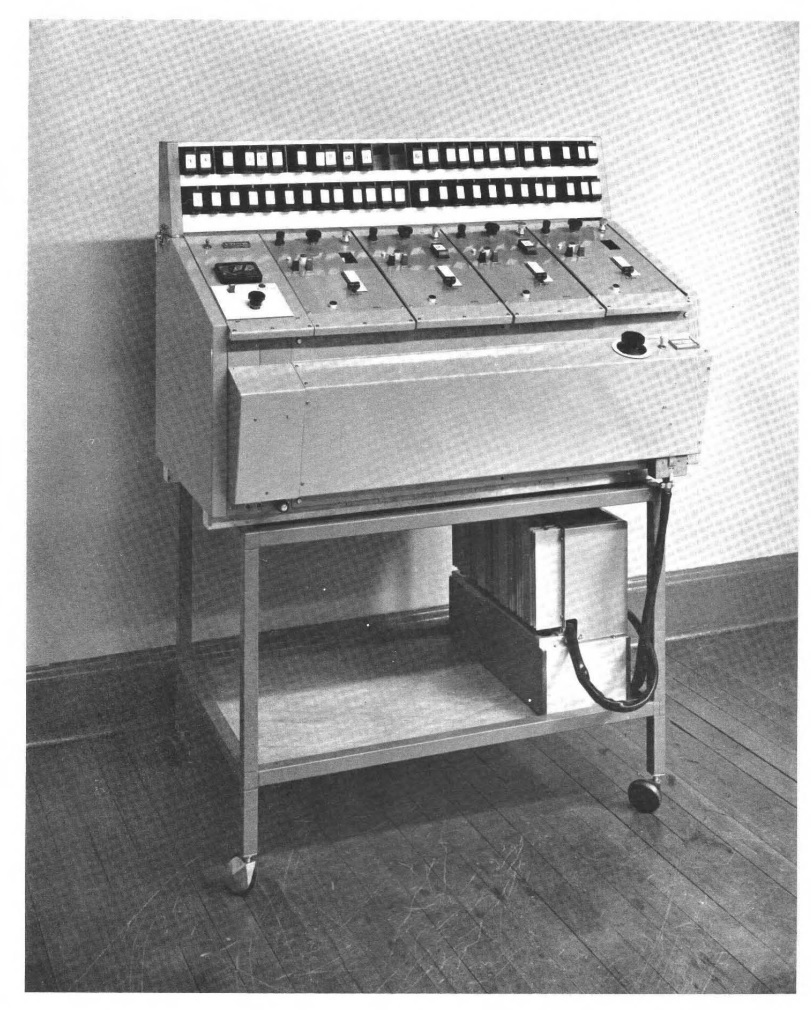
Transistorised Coconut Shells
Louis Neibur, in his book Special Sound, got the impression that the BBC “reneged” on the deal with Mellotronics and plumped for a disc-based system, but it was actually built and delivered, albeit in small numbers. There were limited sales outside the BBC too with at least one at London Weekend Television. The BBC probably took the majority of the PEGs though and they were later auctioned off and at least some are in private hands today. Here is a wonderful clip of the PEG being demonstrated at BBC Pebble Mill as part of the first episode of Midlands Today to come from the brand-new studios, which opened in June 1971.
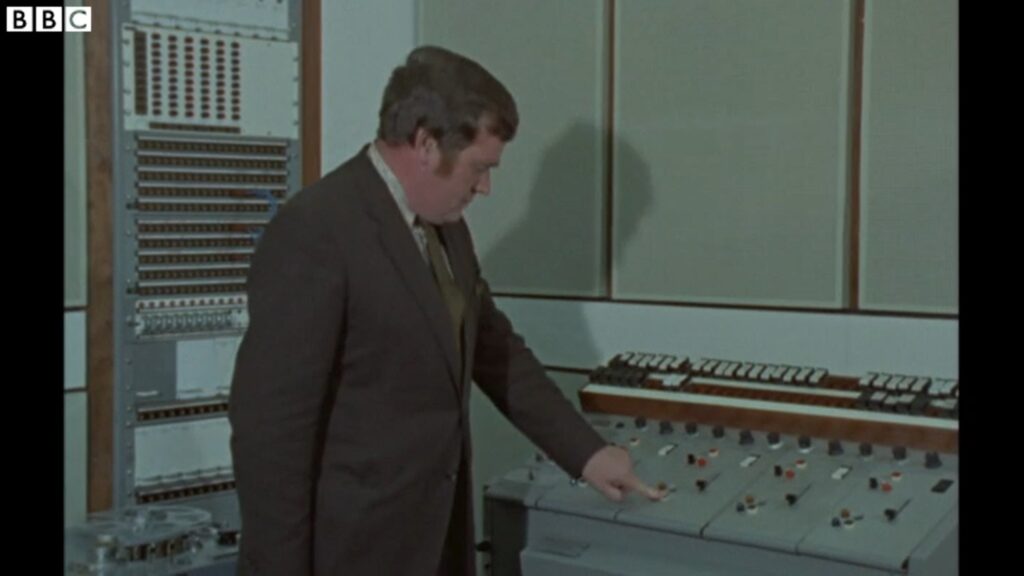
Stop Press
Well, isn’t always the way? Just a day after I posted this I found another reference to the PEG in another video. In 1980 the BBC made a training video about the Sypher Suite audio dubbing facilities. This one is not widely available but can be viewed at Ray (ex-RWS engineer) White’s site here.
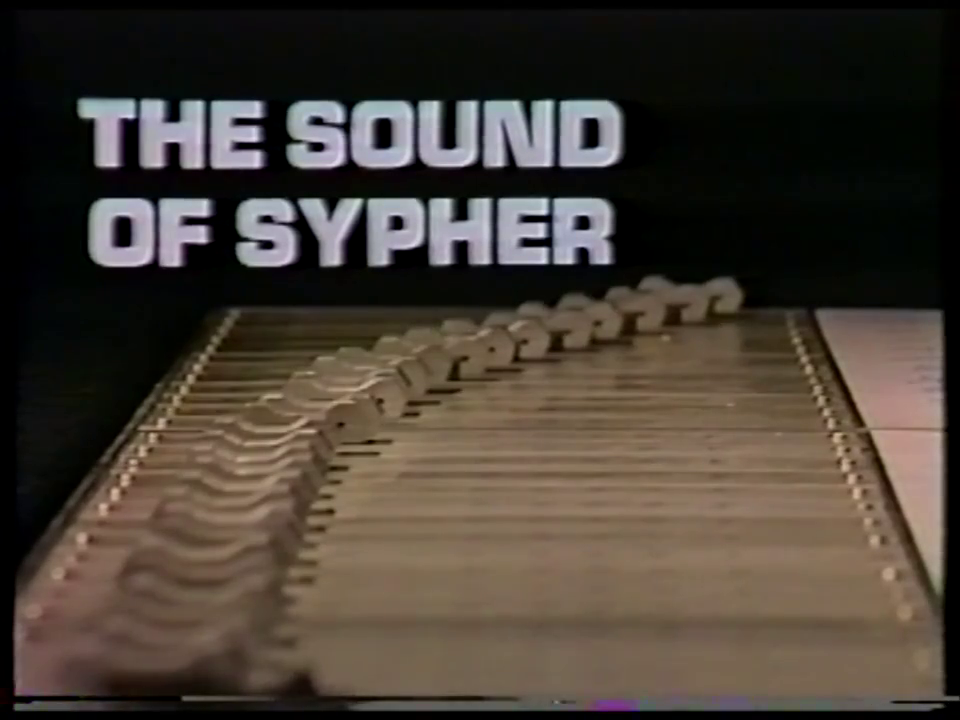
Sound On Sound Magazine editor Hugh Robjohns was involved in project managing the installation of just such a suite and commented on the now lost-to-time old SOS forum
The PEG system was a unique BBC design that was essentially a mechanical
Hugh Robjohns, SOS Terchnical Edirto – SOS Foum (date unknown)
‘sampler’ to play sound effects instantly on remote cue using mellotron-like
mechanics to pull lengths of quarter-inch tape from a special cassette over a
replay head.
Better still, the video demonstrates the usage of the PEG (and indeed the whole suite) with episode 1 of The Hitchhiker’s Guide To The Galaxy and Paddy Kingsland’s sound effects. There’s also a blast of Peter Howell’s Doctor Who theme.
When we get to the PEG, this is the commentary
This modern suite does have one peice of near antuquity. A small cartreidge that contains ordinary quesrter inch tape. It’s called PEG, and teh BBC finds it invaluable. You’ll see why in a minute.
The Sound of Sypher – BBC 1980
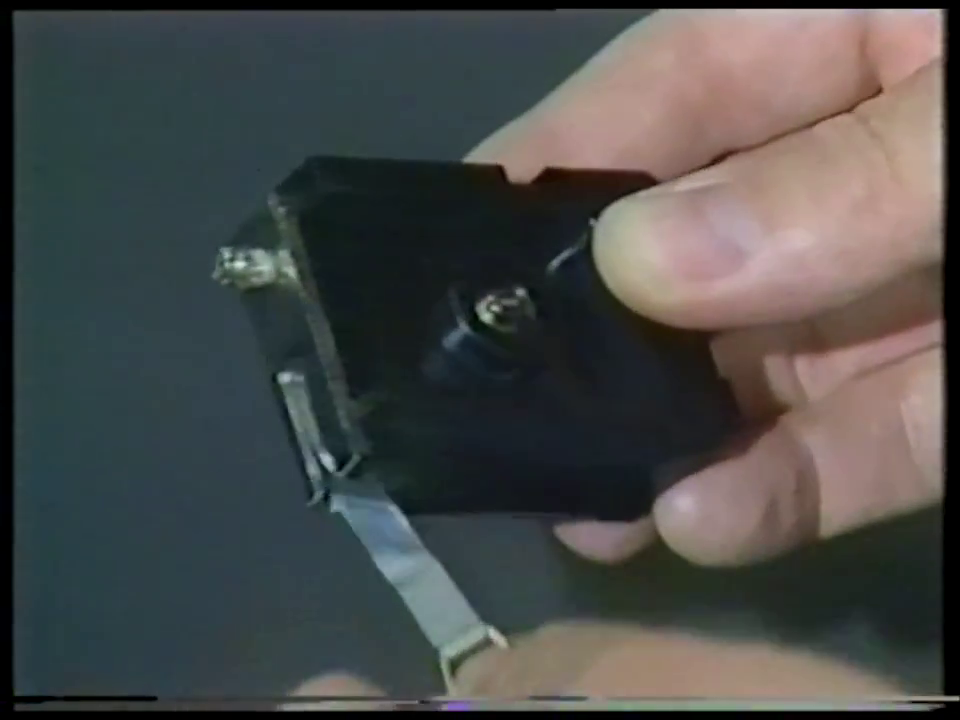
So, as I said above, there’s no way the BBC switched away from the PEG in the sixties as it was still vital into the 1980s. If they “reneged” on a deal with Mellotron did they switch manufacture to somewhere else?
Anyway, the demonstration goes on to show how an effect, already on a PEG cartridge (which they just call a PEG or peg, I suppose) is loaded ready for automatic playback in sync with the video at a timecode the editor has programmed in to the computer.
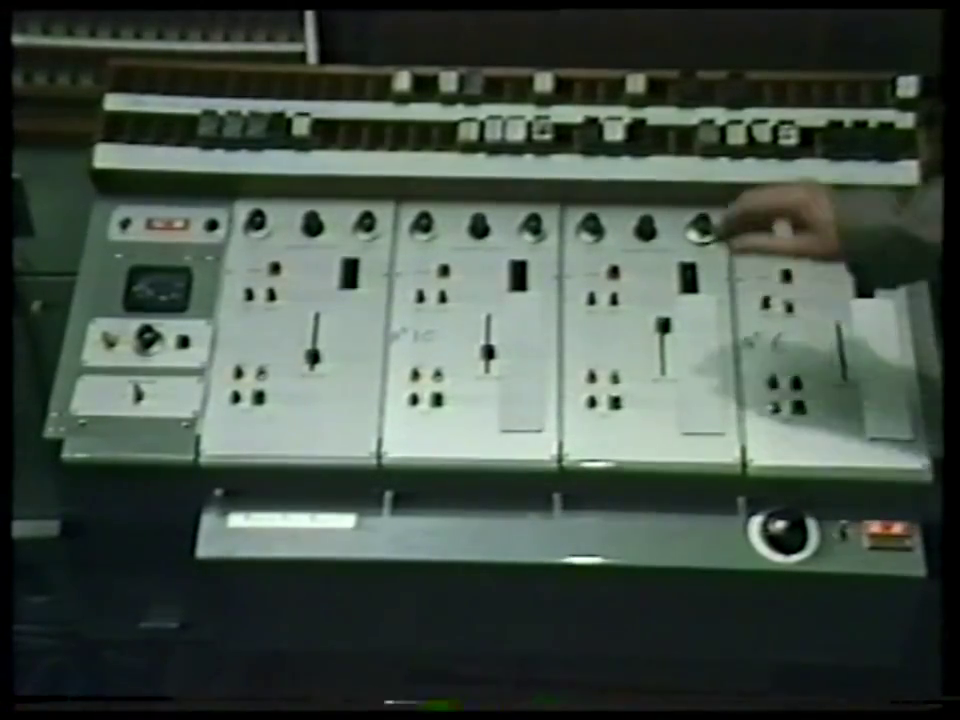
So, by the 1980s the tape-cartridge-based PEG was still in use and now under computer control.
Radiophonics & Mellotronics
The preceding story explains how the BBC moved away from the grams operators and into the 70s with tape cartridges and push button cueing of sound effects. Fascinating though this gear talk is (to me, anyway), why am I showing an interest within in this blog? The Discographic and this Discursive blog is supposed to be about the BBC Radiophonic Workshop recordings, or at least something to do with that topic. Horses’ hooves and car horns are not the domain of Special Sound!
Certainly not, but, in Mellotron Sound Effects Console there it’s a small section of the effects library called Radiophonics. That is what earns its place here. It’s really not Discography as usually defined, but it is close enough – being not solely part of a broadcast programme and existing outside the confines of the RWS tape archive.
The full list of effects is viewable here. As you can see there are 9 effects simply called ‘Radiophonics’. That’s not all though. There are Electronics, Wind, and ‘Goon Comic Noises’ which amongst others could be Radiophonic in origin.
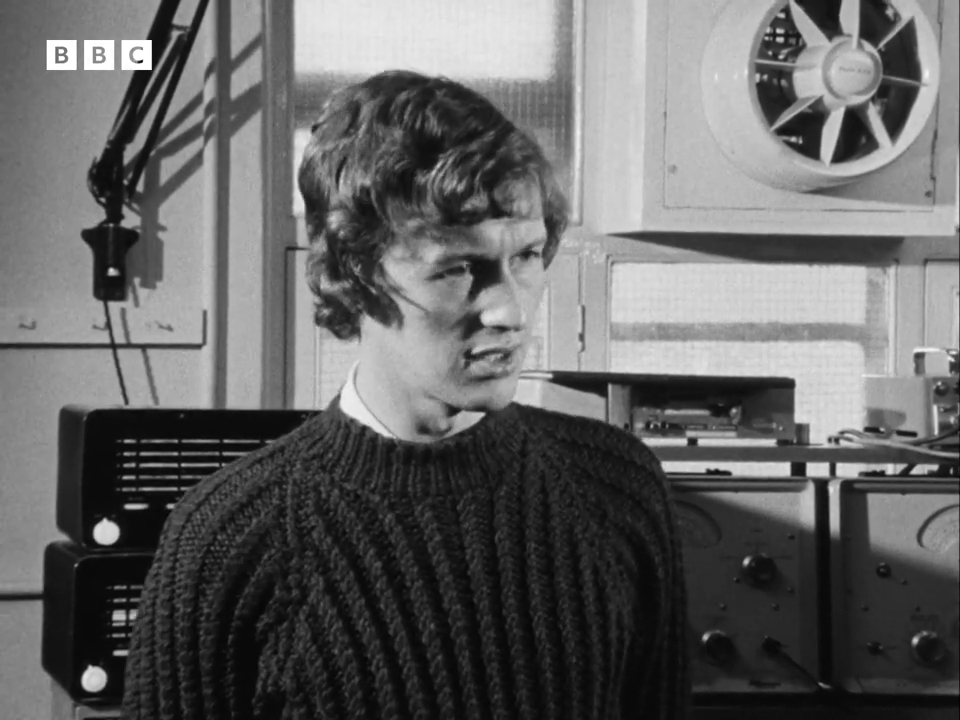
In the RWS tape library, there is a reel (TRW 6292) of “Sounds For Mellotron” dated April 1965 and put together by Brian Hodgson. I asked Brian about this on Facebook, but he said, “We never had one but did supply some of the original Sounds”. OK, but we need to hear these sounds. What were they? Obtaining a working Sound Effects Console and listening to the sounds is somewhat beyond the scope and means of this blog. Demonstrations of such a working console are rare. In fact, the only one found on YouTube was of a machine which was about to be renovated and have its sound effects tapes replaced with musical ones. We do get a rendition of church bells and a baby crying before it was stripped down though (and the tapes were kept). Happily, there is another way to hear a Sound Effects Console.
G-Force Software M-Tron Pro
Way back in the year 2000, G-Force Software released the first virtual recreation of the Mellotron, the M-Tron. At that point in time the physical ‘tron had been out of production for fourteen years. A revival was inevitable though and through the 1990s artists with deep enough pockets adopted the unique sounds of the real Mellotron. Digital synthesizers and samplers had made the sounds of machine available too, with patches called ‘Tape Orchestra’, or suchlike, simulating the rusty tones of the venerable but redundant Mellotron of yore. G-Force took the lead with their dedicated M-Tron software version, but they didn’t stop there.
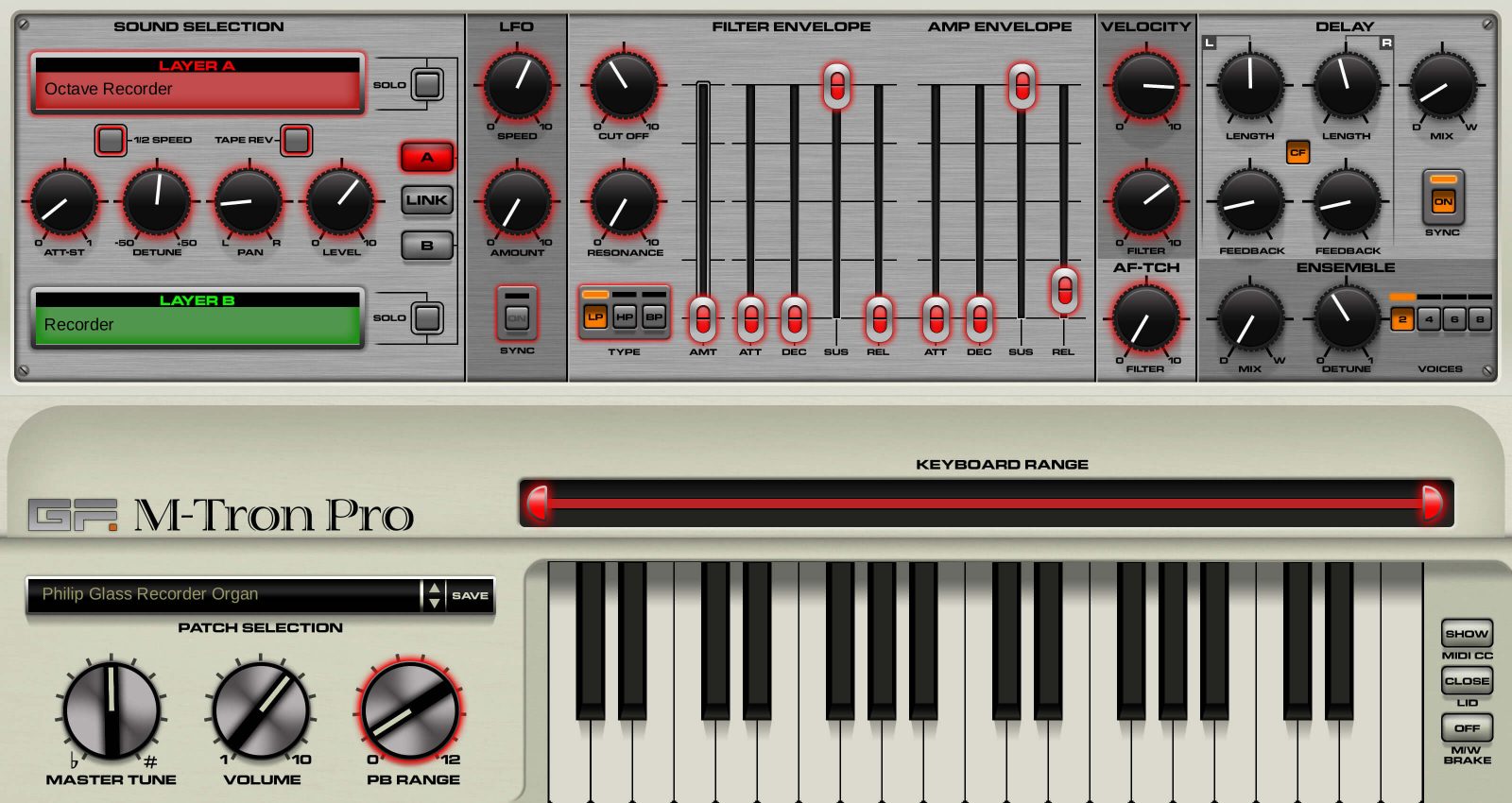
In 2009 the M-Tron Pro was released with a plethora of new features and a vastly increased library of tapes included. Meanwhile, the original manufacturers were back with a new Mellotron and the two British companies had begun a fruitful relationship. The original tape banks of the Mellotron were still available on the robust Emitape tape stock so there was ample scope for further expansion of the M-Tron Pro’s sound banks. As well as the original factory tapes there were those specially created for artists, such as Black Sabbath and Tangerine Dream. In 2015, the Mellotron Sound Effects Console’s 50th anniversary, the ‘Streetly Mellotron MKII SFX Library’ including all 1260 effects from the original BBC collaboration was released. Finally, all the sounds from countless radio and TV productions were available in the same format as used in the sixties for anyone to muck about with!
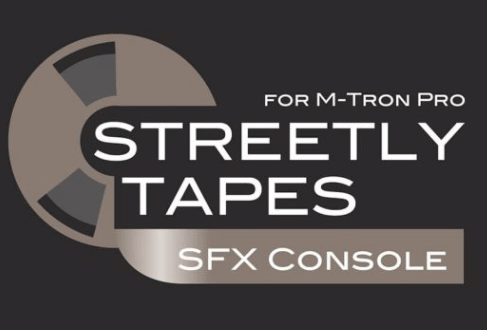
And, yes, we can now hear the Radiophonic Workshop sounds, once the necessary sums have been paid to G-Force, of course. There are two groups of purely electronic effects which I believe are all from the Workshop. One called Electronic and one Radiophonics. The Goon Show effects still have a faint question mark in my mind but are probably not Radiophonic. Wind and other weather effects are all field recordings and, in fact, the Sound Effects Console tapes pre-date the simulated effects from the Workshop, which I covered in this post.
So? What do they sound like? Well, here is my summary, but you can also get a flavour from the demos on the G-Force website here.
Electronics
- Rising warble into high hum (take off / warble akin to Bloodnok’s stomach)
- High humming
- High warble (alarm)
- High humming (again)
- High hum into falling warble (landing?)
- High hum and high wable
- Bursts of static/noise
- Quick pings decreasing pitch
- Blip-blip-whoop
Radiophonics
- Mid-High chime
- Slow whoops with deep rattle
- Descending whoop (laser blast?)
- Slow whoops with deep rattle (again)
- Slow descending warble with a high thrum background
- Slow high pitched warble
- Slow lower chimes with low-pass filter modulation
- Fast swoop down and up with mid-warble fading in
- Swoop down to ships whistle tones
- Swoop down to mid-chime
Effects Review
The Radiophonics effects sound noisier and more atmospheric, but otherwise similar enough to have come from the same source as the Electronic. In both groups, one sound is repeated on two keys. Presumably, this was to allow these background effects to be overlapped and continued for as long as needed. The general theme is science fiction or fantasy and these are not the most sophisticated examples of Hodgson’s work from this era. It seems that the brief was for generic electronic sounds rather than the more specific and dare I say realistic effects required for Doctor Who. They may have been recycled from Who or some other shows, although I have no information on that. Conversely, it’s been said that sounds from the Mellotron console were used on Doctor Who. I could watch a lot of extant DW from those first couple of years and then the following years to see if anything matches, but that is a rabbit hole too deep for me to follow, at least for now.
What does seem clear, having now heard them, is that these sounds were not picked up by the Sound Effects Centre and made available on discs. They were therefore exclusive to the Mellotron. This may well have been a stipulation of the brief, to avoid any copyright issues or just the desire for something new. This also undermines the statement in the Tape Recorder article that all the effects came from the BBC Sound Effects Library, not that it matters. And, whilst we’re on things that might not matter, an assumption could be that the purchase of a Sound Effects Console covered the effects’ copyright payments too, although I’d need to see more paperwork to sort that out. The same goes for the M-Tron Pro effects too, as no copyright usage warning is included with the Sound Effects Console pack.
Console Prizes
In conclusion, you could buy a Mellotron Sound Effects Console in the sixties and have rather exclusive access to genuine Radiophonic sound effects. This would have been a rather pricey way to do it though. It remains pricey. A MKII Mellotron today might cost you about £15k. This is below the rate of inflation though, so not exactly a wise investment. The Effects Console is rarer though, so that could be even more costly to acquire now. For a more reasonable £75 I was able to get the fabulous M-Tron Pro and the SFX pack. Still not cheap for 17-19 8-second-or-less effects, but that’s not all you get, of course.!
Nonetheless, it wouldn’t be until the release of Out Of This World Sound Effects (REC 225) in 1976 that anything like this was in the shops. Meanwhile, the next challenge is to find a TV or Radio programme which uses these Mellotron effects.
References
- https://www.outofphase.fr/wp-content/uploads/2020/10/tape_recorder_0266.pdf
- https://whitefiles.org/rwx/rwslib.pdf
- https://worldradiohistory.com/UK/Tape-Recording-UK/60s/Tape-Recording-UK-1967-03.pdf
- https://www.outofphase.fr/en/mellotron-fx-console-en/
- http://downloads.bbc.co.uk/rd/pubs/archive/pdffiles/monographs/bbc_monograph_71.pdf
- https://www.muzines.co.uk/articles/total-recall/12133?theme=2
- http://www.muzines.co.uk/articles/sampling-sixties-style/46
- https://m.facebook.com/569867889719351/photos/a.569881453051328/588596917846448/?type=3
- https://soundgas.com/blog/a-fairlight-a-mellotron-fx-a-robot-monkey-head/?wmc-currency=GBP
- https://www.bbc.co.uk/blogs/genome/entries/7e88ba4e-fa0b-43a5-91cd-b0b765b82aa1
- https://www.bbc.co.uk/news/av/uk-england-birmingham-29109003
- https://forums.stevehoffman.tv/threads/strawberry-fields-forever-mellotron-mystery-possibly-solved.952280/
- Mellotron FX Sound Effects Console Restoration/Tape Replacement Part 1
- https://www.gforcesoftware.com/products/the-streetly-tapes-sfx-console-for-m-tron-pro/
- Special Sound – Lous Niebur (2010) P125-127
- https://www.matrixsynth.com/2013/05/rare-bbc-1967-mellotron-peg-programme.html
- https://www.soundonsound.com/reviews/g-force-m-tron-pro
- https://www.gforcesoftware.com/products/m-tron-pro/
- http://www.museumofmastertapereels.org/emi-tape-history.html
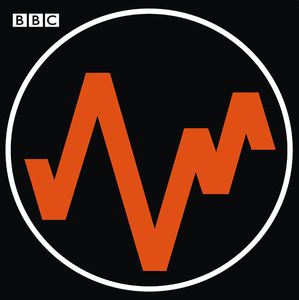
The Pebble Mill P.E.G was still there when I visited the studios in 1983, providing sound effects for The Archers – still working and in regular use. We even got a quick demonstration. It was probably replaced a year or two later when the studio was re-equipped. By the late 80s, the BBC was using Emulator and Akai samplers as fx machines.
Hi,
Sorry, your reply got lost in the spam for a bit!
I would love to see those samplers in use!